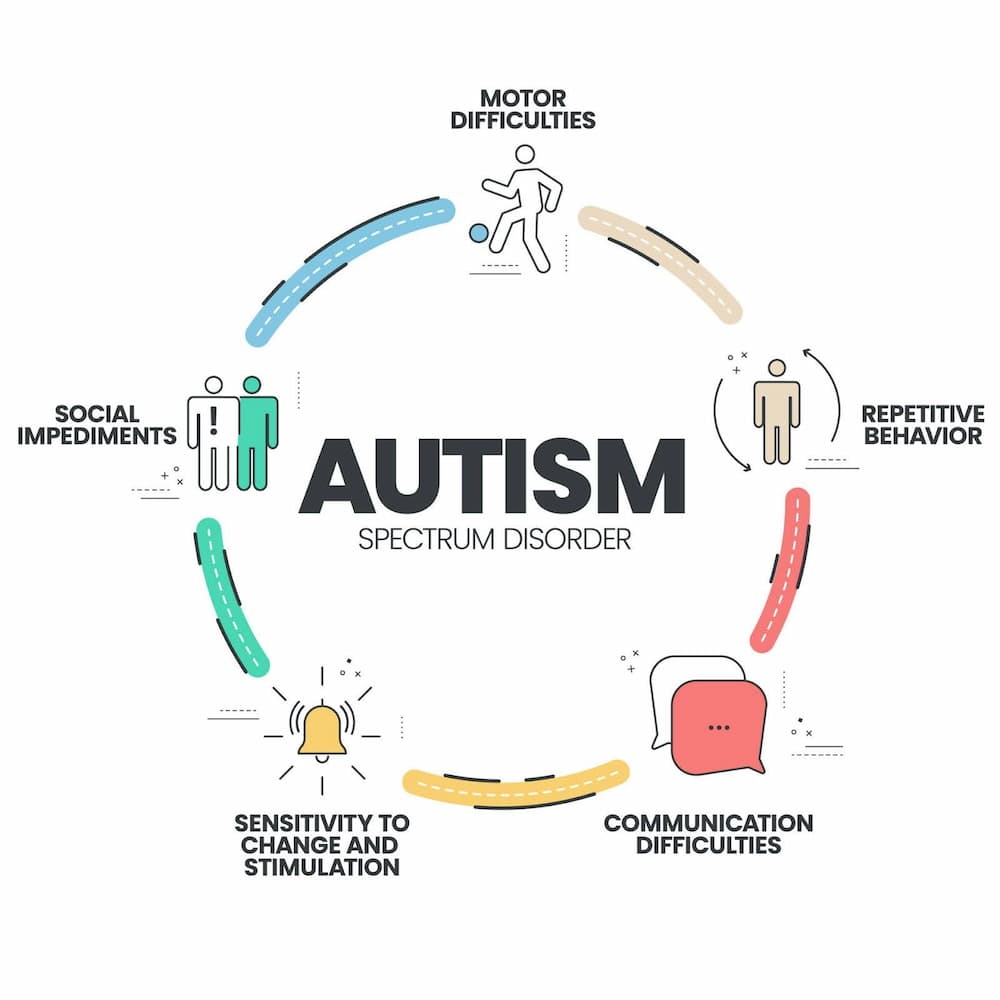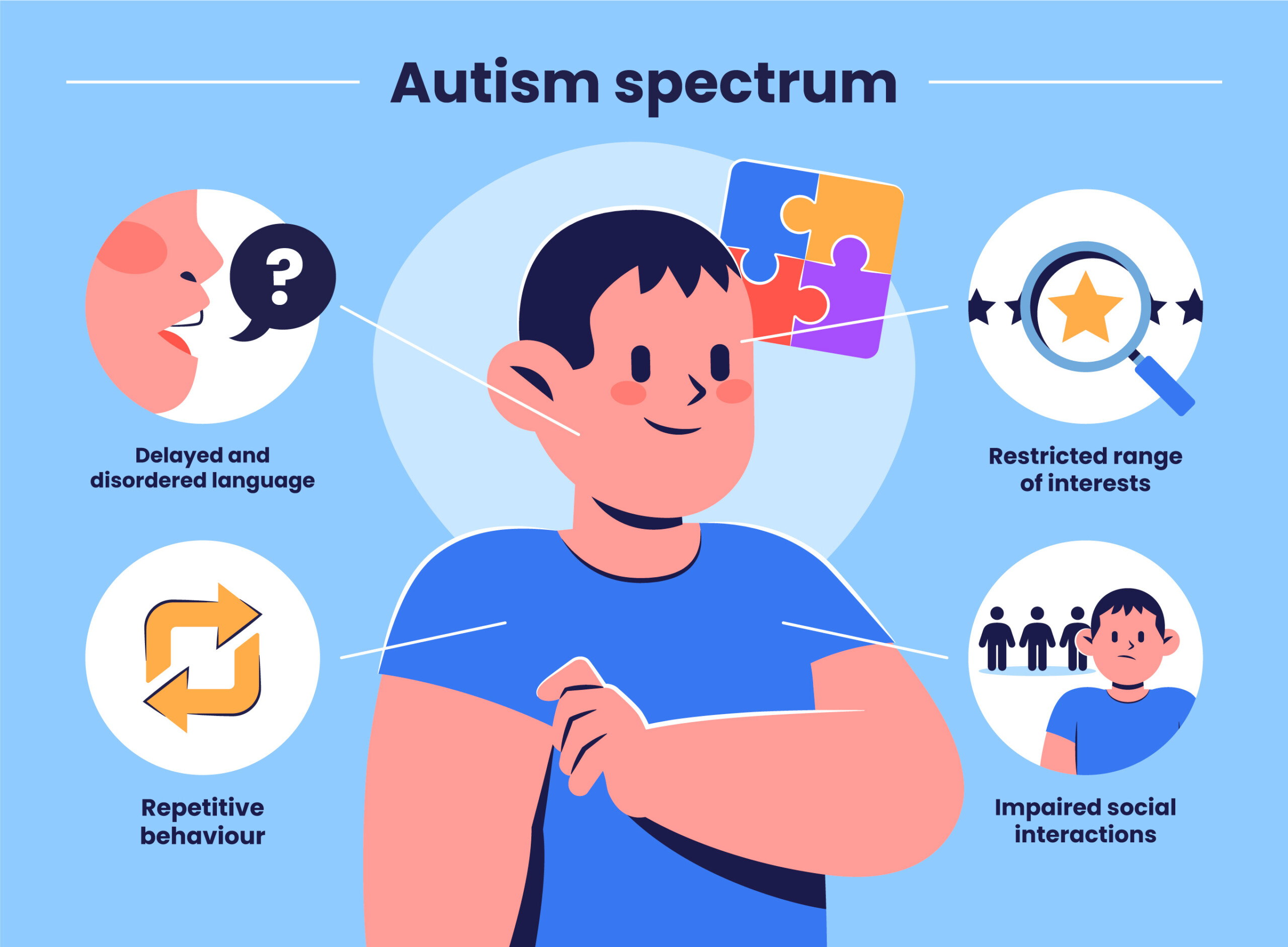Advertising Inclusivity: Exactly How to Develop Encouraging Environments for Those With Behavior Autism
Producing encouraging settings for people with behavior autism is crucial for promoting inclusivity. What specific steps can you take to ensure these individuals thrive in numerous setups?
Understanding Behavior Autism: Secret Attributes and Obstacles
Understanding behavioral autism includes acknowledging its crucial qualities and the obstacles it provides. Individuals with autism typically display problems in social interaction, interaction, and repeated behaviors. You could discover that they struggle to interpret social hints, which can result in misunderstandings in day-to-day situations. Sensory level of sensitivities are likewise usual, making certain atmospheres frustrating.

Supporting a person with behavior autism indicates holding your horses and versatile. You'll need to create an environment that decreases stress and anxiety and advertises convenience. Familiar routines can aid, in addition to clear, constant interaction. Recognizing these qualities will lead the way for a lot more effective support and an extra comprehensive atmosphere.
The Function of Empathy in Sustaining Individuals With Autism
Empathy plays a crucial duty in supporting people with autism by helping you understand their special viewpoints. By exercising active listening methods, you can build psychological connections that foster trust fund and interaction - Autism Therapist. This understanding not only improves your relationship yet likewise produces a more helpful setting for them
Understanding Distinct Point Of Views
When you think about the unique perspectives of individuals with autism, it comes to be clear exactly how important compassion remains in providing effective support. Everyone's experience is formed by different sensory sensitivities, interaction styles, and psychological reactions. By tipping into their footwear, you can start to recognize their globe. This understanding assists you respond a lot more thoughtfully to their requirements and challenges. Recognizing their strengths and battles cultivates a deeper connection, developing count on and motivating open interaction. Your ability to empathize enables you to produce a setting where they feel safe, valued, and understood. This encouraging ambience empowers people with autism to share themselves, eventually boosting their health and development. Compassion is not simply a skill; it's a vital structure for significant connections.

Active Listening Methods
Energetic paying attention methods play an important role in sustaining people with autism, as they foster a much deeper connection and understanding. When you participate in energetic listening, you show that you value their ideas and sensations. Maintain eye get in touch with, nod, and use verbal affirmations to signal your attentiveness. Reword what they say to verify your understanding, and ask open-ended inquiries to encourage further expression. Avoid interrupting, permitting them to articulate their points totally. Be mindful of your body movement; it ought to be open and inviting. By exercising these methods, you create a secure area where individuals feel listened to and respected, eventually enhancing their interaction and psychological well-being. Compassion shines through when you actively listen, strengthening your partnership with them.
Building Emotional Connections
Developing a supportive setting via active paying attention normally leads to developing psychological links with individuals on the autism range. When you truly engage, you're not simply hearing their words; you're comprehending their sensations. This compassion cultivates count on, enabling them to share themselves openly. Use nonverbal signs, like eye call and nodding, to reveal you exist and purchased their experiences.

Efficient Communication Approaches for Inclusivity
Effective interaction methods play an essential function in promoting inclusivity for individuals with behavioral autism. Start by making use of clear, simple language that's easy to comprehend.
Nonverbal signs are similarly important. Take note of your body movement, faces, and tone of voice, as these can convey even more than words. Preserve eye get in touch with and use gestures to improve understanding.
In addition, hold your horses and provide people time to process info. Urge them to share their ideas and feelings, revealing that their input is valued.
Energetic listening is essential; repeat or reword what they have actually said to validate understanding. Adjust your interaction methods based on private preferences, whether it's through visual aids, written directions, or various other tools. This individual touch enhances addition and aids build significant links.
Customizing Support Systems in Educational Setups
In instructional settings, you'll wish to concentrate on Individualized Education and learning Plans (IEPs) that cater to each student's special demands. Producing a sensory-friendly classroom layout can additionally improve discovering by minimizing disturbances and promoting comfort. With each other, these strategies can promote an environment where students with autism grow.
Embellished Education And Learning Strategies
While navigating via the intricacies of autism in academic setups, Individualized Education and learning Plans (IEPs) play a vital duty in tailoring support systems to meet each trainee's unique demands. An IEP details details goals, accommodations, and services that suit your child's obstacles and toughness. It's vital to work together with teachers, read more professionals, and your kid to develop a thorough strategy. Routinely updating the iep and reviewing ensures it remains efficient as your child expands. Motivate open communication amongst all events involved, cultivating an encouraging network that promotes your youngster's success. Keep in mind, an effective IEP is not simply a file; it's a living device that adapts to your kid's developing needs, guaranteeing they prosper in their academic environment.
Sensory-Friendly Classroom Style
Developing a sensory-friendly classroom can substantially improve the learning experience for pupils with autism. Begin by assessing your class's illumination; soft, all-natural light can lower overstimulation. Incorporate flexible seating choices, like bean bags or flooring paddings, to permit students to find their comfort area. Use relaxing colors on walls and decor to develop a calming environment. Think about including sensory edges with fidget devices, noise-cancelling headphones, or weighted blankets for trainees who require breaks. Arrange rooms to minimize clutter, helping trainees concentrate better. Develop clear regimens and signals to connect changes, reducing anxiety. By making these changes, you'll develop a setting where students with autism feel more supported and taken part in their learning journey.
Creating Inclusive Workplaces for People With Autism
To promote an absolutely inclusive work environment for individuals with autism, companies have to recognize the special toughness and challenges these people bring. Begin by advertising clear communication and giving in-depth task summaries that lay out assumptions. This aids individuals understand their functions much better and reduces anxiousness.
Take into consideration implementing flexible work plans, such as remote job or readjusted hours, to accommodate numerous individual preferences and sensory requirements. Educating your staff on autism awareness is necessary; it can boost compassion and advertise an encouraging environment.
Developing silent areas where staff members can charge during difficult minutes can also make a considerable difference. Urge the usage of assistive technologies that aid simplify tasks and improve productivity.
Eventually, valuing variety will not just benefit individuals with autism but will certainly also improve the entire group, resulting in a much more dynamic and cutting-edge workplace. Accept these approaches to cultivate an atmosphere where every person can thrive.
Encouraging Social Interaction and Community Interaction
Motivating social communication and community involvement is crucial for individuals with autism, as it aids build confidence and cultivates purposeful partnerships. To create an encouraging environment, start by supplying chances for individuals to get in touch with others in a comfortable setup. Organize team tasks that satisfy different interests, such as art classes, sporting activities, or community service projects.
You can additionally help with smaller, structured celebrations where every person can share their experiences and thoughts. Motivate open communication by modeling respectful listening and compassion. Establishing peer mentorship programs can help develop bonds and provide advice.
Entail households and local organizations to expand the assistance network and advertise inclusive events. Remember, the key is to create secure areas where people with autism feel valued and understood. By fostering these connections, you'll assist them thrive socially and develop a sense of belonging within the neighborhood.
Resources and Equipments for Building Helpful Atmospheres
While building supportive environments for individuals with autism might appear tough, numerous resources and tools can make the procedure much easier and much more reliable. Think about making use of visual supports like timetables or social stories to aid individuals recognize their daily routines and social situations. Apps made for communication, such as AAC (Alternate and augmentative Interaction) tools, can additionally enhance communication.
Additionally, training programs for team and volunteers on autism understanding can promote empathy and understanding in your community. Consider neighborhood companies that supply workshops or sources tailored check here for supporting people with autism.
Creating sensory-friendly spaces with soothing aspects-- like soft lights and silent locations-- can benefit those that may become overloaded. Lastly, developing connections with neighborhood assistance groups can offer ongoing assistance and responses, assisting you improve your method and warranty inclusivity for all.
Regularly Asked Inquiries
Exactly How Can I Inform Others About Behavioral Autism Efficiently?
To educate others about behavioral autism properly, share personal stories, provide clear resources, and urge seminars - Autism Behavioral Therapy. Use relatable examples and highlight the significance of understanding different viewpoints to promote compassion and understanding
What Are Common Mistaken Beliefs Regarding Autism That Need Resolving?
You might assume autism just affects communication skills, but that's just one element. Many believe it's solely a youth condition, when as a matter of fact, it covers throughout all ages and manifests differently for each and every individual.
Just How Can I Support for Autism Understanding in My Area?
You can promote for autism understanding by organizing area events, sharing helpful resources, and collaborating with local organizations. Usage social networks to get the word out, and urge open conversations to cultivate understanding and acceptance.
Are There Specific Sensory-Friendly Spaces for People With Autism?
Yes, several neighborhoods provide sensory-friendly rooms, like quiet rooms in collections, specialized play areas, or assigned hours at museums. You can explore regional sources and supporter for more comprehensive rooms to sustain individuals requiring them.
What Role Do Family Members Play in Sustaining Individuals With Autism?
Relative play a crucial duty in supporting individuals with Autism Behavioral Therapy autism. You can provide understanding, perseverance, and encouragement. By proactively joining their lives, you assist construct confidence and foster freedom, producing a supporting environment.
Producing helpful atmospheres for individuals with behavioral autism is important for cultivating inclusivity.Creating a supportive setting with energetic listening normally leads to building emotional connections with people on the autism spectrum. Producing Inclusive Workplaces for Individuals With Autism.
To foster a genuinely comprehensive workplace for individuals with autism, companies must recognize the distinct strengths and difficulties these people bring. Keep in mind, the trick is to develop risk-free areas where individuals with autism feel valued and recognized.